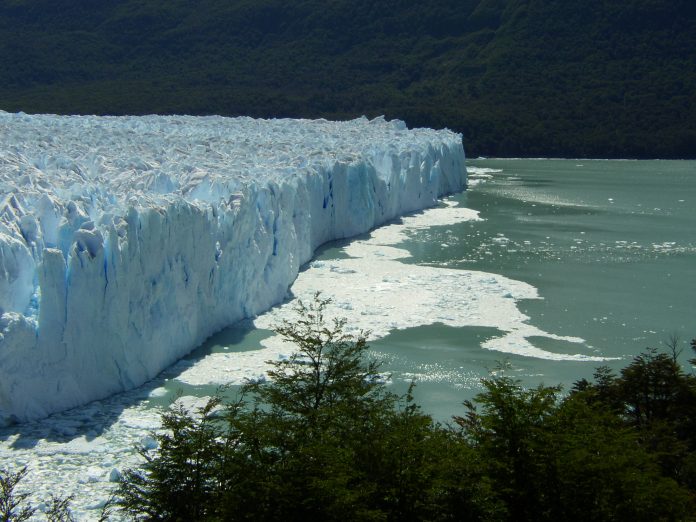by EH
In the vast expanse of the Southern Hemisphere, the glaciers of Patagonia stand as titans, second only to Antarctica in scale. Stretching across parts of Argentina and Chile, these icy behemoths shroud segments of the Andes mountain range. Yet, despite their immense size, they remain shrouded in mystery.
A groundbreaking study, featured in Communications Earth & Environment by the renowned Nature group, has shed new light on these enigmatic ice formations. Leveraging cutting-edge geophysical techniques and satellite imagery, the research team, led by Johannes Fürst of the University of Erlangen-Nuremberg’s Geographic Institute, recalibrated the volume of Patagonia’s two principal ice fields. The results were staggering: an estimated 5351 cubic kilometers of ice, as of 2000, reside within these glacial domains.

Emanuele Lodolo, a researcher at the National Institute of Oceanography and Experimental Geophysics – OGS, underscored the significance of this revelation. “Until now, the Patagonian ice caps have remained elusive, akin to the dimensions of Italy’s Veneto region. Despite their formidable presence, our understanding of their thickness and volume has been scant,” he remarked.
The analysis unveiled a troubling reality: Patagonia’s glaciers are far more vulnerable to climate change than previously assumed. Satellite mapping revealed significant retreat along the eastern flanks, with some glaciers receding several kilometers over recent decades. Such dynamics, the study found, are intricately linked to the morphological intricacies and depths of the glacial basins.
Lodolo highlighted a startling contrast with European counterparts. “While Alpine glaciers seldom exceed a speed of 200 meters per year, Patagonia’s ice flows at a staggering pace, with some glaciers traversing several kilometers annually. Such velocities rival those of Greenland and West Antarctica, signaling a profound susceptibility to environmental shifts,” he explained.
The implications extend far beyond scientific curiosity. As Lodolo noted, Patagonia’s glaciers lose approximately one meter of thickness each year, impacting not only regional water resources but also the delicate ecosystems that rely upon them. Against a backdrop of escalating extreme weather events, the findings underscore the urgent need for concerted action to safeguard these vital natural wonders.
In the annals of Earth’s environmental narrative, Patagonia’s glaciers emerge as emblematic symbols of fragility amidst grandeur. Their fate hangs in the balance, a testament to humanity’s collective responsibility in preserving the planet’s irreplaceable treasures.





























